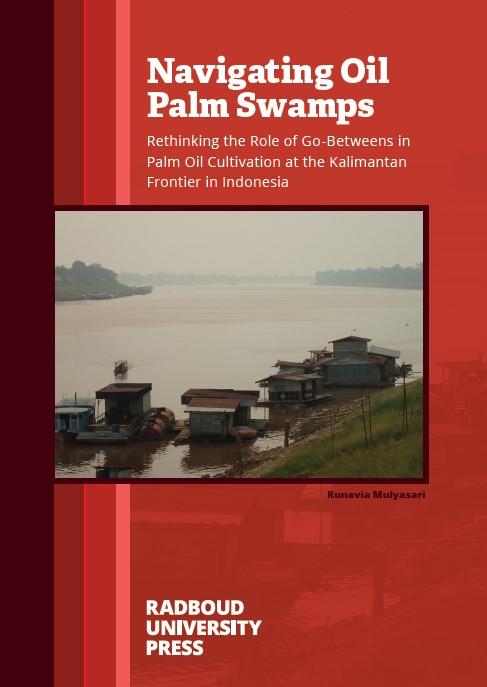Navigating Oil Palm Swamps: Rethinking the Role of Go-Betweens in Palm Oil Cultivation at the Kalimantan Frontier in Indonesia
Keywords:
Go-betweens, Intermediaries Actors, Oil Palm Cultivation and Development, Kalimantan, Ethnography, Lahan BasahSynopsis
Over the past few decades, many rural areas in Indonesia have been undergoing a massive transformation with its natural resources being exploited more rapidly than ever before through the establishment of incredibly large mono-cropping plantations of oil palm. This development has led to the creation of so-called New Frontier regions (De Jong et al., 2017). One such region in Indonesia is West Kalimantan. The profound transformation of this region became a fertile breeding ground for the emergence of go-betweens. Until recently, little was known about the role of go-betweens in these developments and the question why some people were able to leverage the evolving economy to assume a new role or position while others could not. In this thesis, I examine the role of go-betweens in the cultivation of oil palm at the new resource frontier in Sintang, West Kalimantan. It is based on a year of field research in the region, where I discovered that in the wake of the political decentralisation and regional autonomy process, the social and political organization of local societies had changed considerably. As a consequence, go-betweens are increasingly influential in social and political practices.
The establishment of oil palm plantations and the long periods of their maintenance created a new lahan basah (‘wetland’) for various actors to compete, including a new gap to be filled by go-betweens. In this sense, lahan basah is not a place, but rather a space marked by many opportunities. The transformation and fluidity of lahan basah entails the remaking of values and norms, which also explains the central position of a variety of go-betweens in the region. In the past, go-betweens were still structurally embedded in the social organization of societies, but in Kalimantan this has changed to such an extent that beyond structural characteristics new go-betweens require to possess a range of other characteristics as well. Beyond structural changes, the personal characteristics and agency of go-betweens emerged as crucial factors. At the same time, however, exploring the dialectics between socio-cultural structures and people’s agency did not fully explain the success or failure of go-betweens. Another dimension seemed at play: their manifold social relations and social networks. For that reason, too, in order to comprehend go-betweens comprehensively – why they assume and maintain their position, their actions, vocabulary, behaviour, and interactions – it was also necessary to map their social relationships, networks, and practices. The three dimensions of structure, agency and social networks intertwine, enabling go-betweens not just to adhere to structural norms and rules, but to actively shape them for their material and non-material goals and objectives.
From the three critical dimensions explored in this study, it is evident that each dimension cannot be analysed separately to comprehend the roles of go-betweens in the oil palm setting at the new frontier in Sintang. Following a close scrutiny of a variety of go-betweens in the region, I demonstrate that these three dimensions in varying combinations give rise to five distinct types of go-betweens: an adaptive go-between, a speciality go-between, an opposing go-between, a positioning go-between, and a go-between that may be regarded as a chameleon. In practice, this typology is fluid and flexible for each type of go-between in the so-called lahan basah, the adaptation of which is grounded in the situation, its conditions, and their objectives to maintain and sustain their role.
Given their role, all go-betweens in Sintang share both fundamental and complementary characteristics yet their style is intricately interconnected in a dyadic or rather triadic manner to social structures, individual characteristics, and social networks. The entanglement of individual characteristics with structural aspects and social networks in our analysis offers a more comprehensive understanding of their position. In this context, go-betweens can either withdraw or find ways to navigate the lahan basah. The nodes and dimensions in lahan basah provide space for go-betweens to connect within social spheres, and in crossing hierarchical as well as horizontal relationships. Consequently, go-betweens are not uniform actors but individuals with specific personal characteristics acting and moving between structural conditions and social networks, showcasing their ability to seize opportunities and find ways to capitalize on them.

Published
Series
Categories
License

This work is licensed under a Creative Commons Attribution-NonCommercial-NoDerivatives 4.0 International License.

